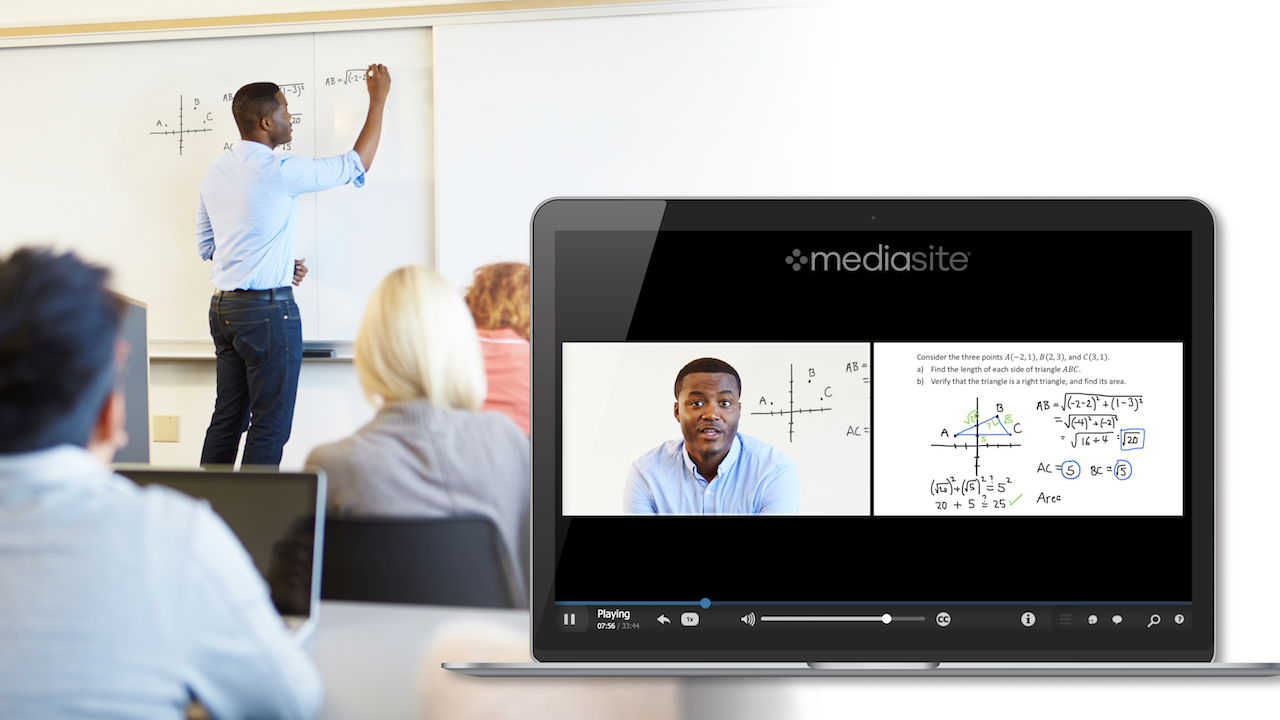The school year looks markedly different this time around for Louisiana Tech University, but campus leaders are confident they have the right mix of synchronous and asynchronous learning tools to provide the same quality education their students expect. Instructors are using Mediasite lecture videos and real-time Zoom calls to continue teaching and learning and improve student outcomes.
“Tools like Mediasite improve access to education for our students,” said Thomas Hoover, CIO, Louisiana Tech University. “We scaled up Mediasite campus-wide within one week in the spring. It will continue to be a great retention tool for students because we can create equity in the classroom and better outcomes for those who have difficulty working in a traditional class environment.”
Related: The Technology Manager's Guide to Distance Learning and Streaming
This fall, courses are taking place a variety of ways including face-to-face, online, and hybrid. Instructors create video lessons with Mediasite from their offices or homes for students to watch prior to class. Then, students meet in real-time via Zoom for small group collaboration.
A Mediasite user for nearly a decade, Louisiana Tech already had the infrastructure in place for success during the initial COVID-19 shutdown in the spring. But with less than 10 percent of its classes fully online at that time, the university needed to scale up quickly. Fast forward one week and 100 percent of classes were remote-ready, and a majority of Louisiana Tech’s faculty received training on how to use tools like Mediasite’s personal capture software.
Mediasite video use doubled in the spring and summer compared to the prior term at the university: instructors created nearly 22,000 lesson videos alone during that period. To date, students have viewed these videos nearly 112,000 times, signaling that they’re relying on Mediasite as a valuable study tool.
“We don’t know what’s going to happen in a month or two but having products like Mediasite is a tremendous help. Instructors can record lectures ahead of time or record a synchronous Zoom call and put it into Mediasite for students,” said Daniel Schales, Louisiana Tech’s director for infrastructure and IT. “This gives students the option to review the material as many times as they’d like.”
Zoom Integration
Louisiana Tech instructors can manage all their video content in one secure and searchable place in Mediasite. An integration with Mediasite and Zoom lets instructors decide what calls should be sent to Mediasite. The recordings are automatically uploaded into the appropriate course folder in Mediasite alongside their other valuable videos and then distributed to students directly in their learning management system.
The Zoom recordings benefit from the full functionality of Mediasite: accessibility tools like closed captioning and transcription, robust search, video and caption editing, anytime and anywhere publishing, interactivity tools to track viewer engagement, and back-end analytics.
“Being able to automatically and easily bring our Zoom content to Mediasite will let our students access all the educational videos in one common interface,” said Darrell Eddy, IT coordinator and network administrator. “Plus, they can search for keywords in the recorded Zoom files and Mediasite will pinpoint exact parts of the lecture.”
“While this scenario certainly isn’t what students and instructors anticipated at the start of the year, Louisiana Tech University is fully embracing online learning as an opportunity to help its students learn with new technologies and communicate effectively with video,” said Joe Mozden Jr., CEO, Sonic Foundry, the maker of Mediasite. “These are skills that students will continue to need throughout their educational and professional journeys. Louisiana Tech is creating an engaging learning experience for students regardless of their location, and we are proud to continue our longstanding relationship with the university that is a quickly positioning itself as a leader in hybrid learning amid the pandemic.”
